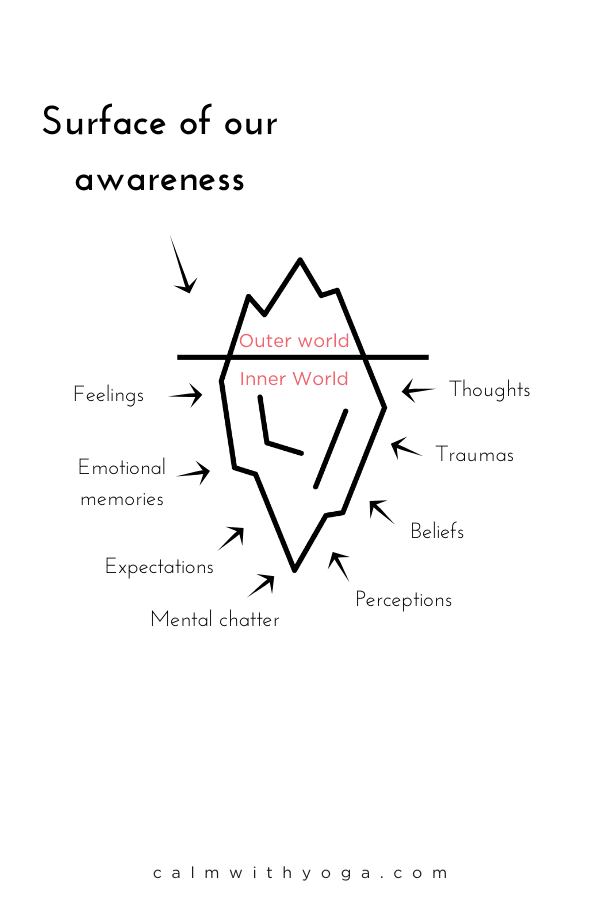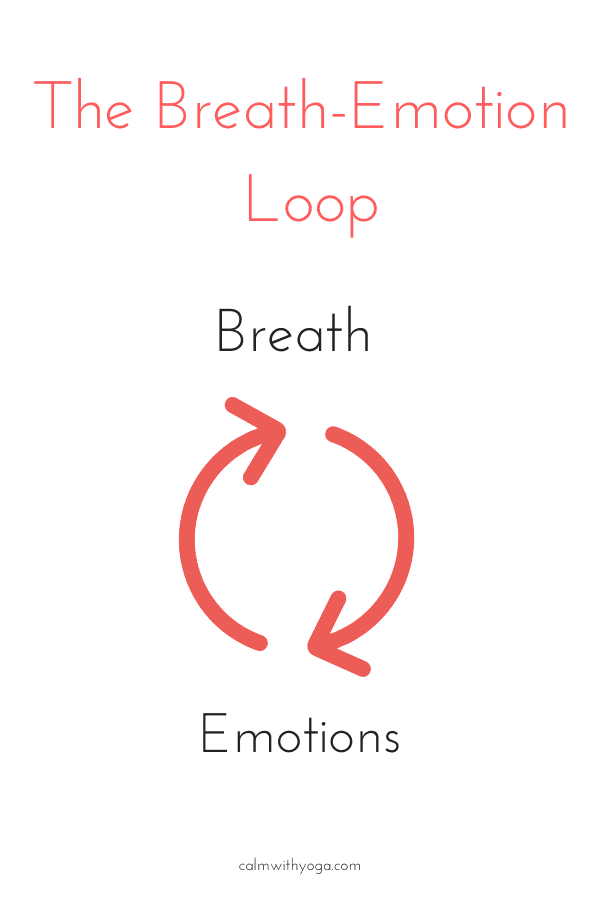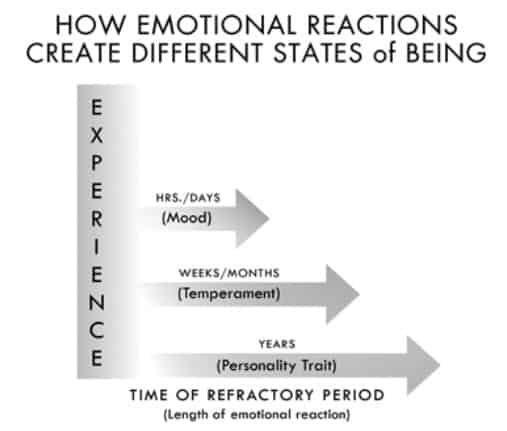Whenever you feel sad, mad, nervous, or out of control, write down the thought that underlies your unhappiness and ask yourself:
Is it true?
Can you absolutely know it’s true?
Don’t allow your mind to be infested with negative thoughts.
-Dr. Daniel Amen, author of “Change Your Brain, Change Your Life”
Bad moodsandbad daysare a non-negotiable part of life.
No one escapes them.
Bad moods are neither good nor bad things per se.
(Neither are good moods, by the way.)
Sure, they’re not fun to experience and can often derail our entire day or even days.
They can be frustrating and draining on our energy and mental health.
Who doesn’t know what it’s like to feel hijacked by a negative mood you can’t quite shake off or get over?
You have a fight with your partner.
PMS shows her ugly head.
Pregnancy hormones have you in a tizzy.
Or maybe your kids are fighting non-stop and you can’t even make a ten-minute dinner without having to break it up.
It can often feel as if you’re at the mercy of your emotional responses and automatic negative thoughts; as if they control you and there’s nothing you can do about it.
But you actually have more power than you think during those moments.
There are specific simple things you can do to create a positive effect in the face of overpowering negative emotions.
“Bad” moods can be informative and transformative if you’re willing to shift your perspective a bit…
Moodiness provides us with two things:
1 – Feedback about what’s going on in our internal world.

Our inner world is comprised of our thoughts, emotional memories, feelings, beliefs, perceptions, and expectations.
Moodiness is a symptom of what’s going on underneath the surface of our awareness, and so if we dig deeper we can use it as feedback.
Mood swings are like the tip of the iceberg of our inner world and we can use them to uncover areas we need to pay attention to or work on.
2 – Growth opportunity.
For a seed to achieve its greatest expression, it must come completely undone.
The shell cracks, its insides come out and everything changes.
To someone who doesn’t understand growth, it would look like complete destruction.
– Cynthia Ocelli, author
Each unpleasant, confronting, or uncomfortable moment offers us an opportunity to grow beyond our current limiting perceptions and ways of being… if we choose to accept the offer.
It’s not easy though.
It’s not easy facing that which brings us discomfort and owning parts of us we’re not particularly fond or proud of.
But according to yogic wisdom, being able to withstand the heat of discomfort is a prerequisite for achieving mental and emotional mastery.
Using the Yogic Principle of Tapas to Manage Moods:

Tapas means ‘to burn or create heat.’
Anything burned out will be purified…
But how can this burning process be effected with our mental impurities?
By accepting all the pain that comes to us, even though the nature of the mind is to run after pleasure.
We will actually be happy to receive pain if we keep in mind its purifying effects.
– Swami Satchidananda, yogic teacher & translator/ commentator of the Yoga Sutras of Patanjali
By practicing the yogic principle of Tapaswe train the mind and body to be able to endure discomfort.
This is an empowering exercise that trains us to become familiar with our inner world so we can become more adept and confident at transforming moods and emotional reactions.
We practice Tapas by staying present with the emotion, reaction, or mood.
We stay present even when we want to distract or run away.
You may have already been exposed to this principle on the mat and in asana practice – the physical aspect of yoga.
Physically you can practice Tapas by staying with the challenge and discomfort that comes from bodily sensations in the postures.
Another added benefit of practicing Tapas on the mat is the release of endorphins that follows intense physical activity – this will also keep moods in check. 🙂
The following 4-step process will help you practice Tapas…
4-Step Mood-Shifting Process:
Feelings come and go like clouds on a windy sky.
Conscious breathing is my anchor.
– Thich Nhat Hanh, Buddhist monk & author
Here’s what to do the next time your mood takes a dive:
Step #1–Becoming aware of your breath.
Cultivating the habit of daily breath awareness is so effective at stilling the ripples of the mind that even Buddha himself taught this practice to monks.
In particular, the Buddhist Anapanasati Sutta, also known as the “Discourse on the Full Awareness of Breathing,” details Buddha’s instructions on how to use the breath to cultivate calm focus and mindfulness (aka Anapana breathing):
“Breathing in, I know I am breathing in.
Breathing out, I know I am breathing out.
Breathing in, I am aware of my whole body.
Breathing out, I am aware of my whole body.
Breathing in, I calm my whole body.
Breathing out, I calm my whole body”
Mindfully paying attention to our breath means noticing and observing it without judging it and without having the need to change it in any way.
Just noticing the inhales and exhales.
Taking mindful deep breaths…
Bringing full awareness to the sensation and feeling of the breath coming into the nostrils and coming out of the nostrils.
If a thought comes, (which it will, especially if you’re in a mood!) simply bring your attention back to the breath.
Want more guidance? Follow along with us here.
Step #2–Consciously control the breath.
Yogic sages have known for thousands of years that the breath is the portal through which we can transform mental/emotional tension while accessing a state of inner calm and grounded balance.
When the breath wanders the mind also is unsteady.
But when the breath is calmed the mind too will be still, and the yogi achieves long life.
– The Hatha Yoga Pradipika, a 500-year-old authoritative yogic text
Your breathing pattern alone can tell you so much about your internal world.
This is because your breathing pattern is intimately tied to your mood.
Influence one, and you also impact the other.
They form what’s called the Breath-Emotion Loop:

1- Our emotions, thoughts, and moods influence our breathing patterns.
Next time you’re in a mood pay attention to your breathing pattern. You’ll probably notice it’s short, shallow, erratic and/or quick.
Then notice your breathing next time you feel calm, safe, deep in concentration, or at ease. Notice it’ll probably be slower, longer, even-paced, and/or deeper.
2- Our breathing patterns can influence our mood.
If you were to start breathing rapidly taking short and shallow breaths you’ll likely start feeling either awake and alert, or anxious and on guard.
And so, if you begin breathing slowly and deeply you will most probably begin to feel less uneasy and more relaxed.
Paying attention to our breathing patterns can tell us a lot about our mood.
Often times we’re not even aware we’re in a mood until something or someone on the outside reflects it back to us and it’s only then that we realize.
We can become more still and present by consciously controlling our inhales and exhales, and that’s how awareness is born.
This is also considered the Yoga of Emotions.
This is a mental yoga practice (sadhana).
True yoga is not just practiced with the body;
it’s also practiced with the breath and with awareness.
Step #3–Acknowledge what’s there.
Once you’ve spent some time consciously breathing and regulating your inhales and exhales for at least 5 minutes, you’ve likely started a cascade of bodily reactions such as activating your nervous system’s relaxation response.
Controlled deep breathing has the power to help us calm down.
It’s in this calmer state that we have access to higher brain centers that can help us shift emotionally.
Getting present with what we’re feeling and then labeling it out loud may actually have a therapeutic effect on the brain, further strengthening our capacity for emotional control.
According to one UCLA brain scan study, the mere act of naming or labeling our emotions has the power to deactivate the brain’s amygdala, known as the emotional /stress center, while activating or vamping up our brain’s higher thinking centers that help with emotional processing.(1)
So the next time you’re in the throes of your moodiness:
1. Watch your breath. Follow it.
2. Consciously control your breath.
3. Be gentle with yourself.
Treating yourself gently will send safety signals to your mind and body.
We need to feel safe in order to tap into what we’re really feeling.
Only then can we acknowledge what we feel.
Expressing feelings and emotions in the moment can be healing and transformative.
It can also be a practice in self-care, which cultivates self-esteem.
Step #4 – Release the need to overcome it…Lessen the resistance.
Once you’ve pinpointed what’s there let go of the need or desire to overcome it, change it, eradicate it, or avoid it.
Use your breath to guide you as you practice Tapas and sit with it, just as it is.
Mindfully paying attention to what’s there means noticing and observing it without judging it and without having the need to change it in any way.
Just noticing.
This is not an exercise for perfection, it is an exercise for mastery.
Each time you catch yourself holding onto judgment about your mood, your emotions, or the situation simply release it a little bit more.
This will be a game of touch-and-go.
This will be an ebb and flow between attachment and judgment… and then release…
Attachment and judgment…
And release.
And on it goes…

According to neuroscientist and author Dr. Joe Dispenza, a mood is an emotional reaction that lasts from hours to days.
If we don’t effectively manage our mood it will last longer than that and can eventually turn into a more permanent fixture of our personality.
This is why it’s a good idea to get really good at becoming aware of and managing our moods better.
Remember, each mood swing or bad day is an opportunity for growth and further self-connection.
We can turn our mood around, and this starts with our breath…
If we regain control of our breathing we can regain control of our mood.
Here’s a 1-minute session to help get you started:
REFERENCES
:
(1)http://newsroom.ucla.edu/releases/Putting-Feelings-Into-Words-Produces-8047












